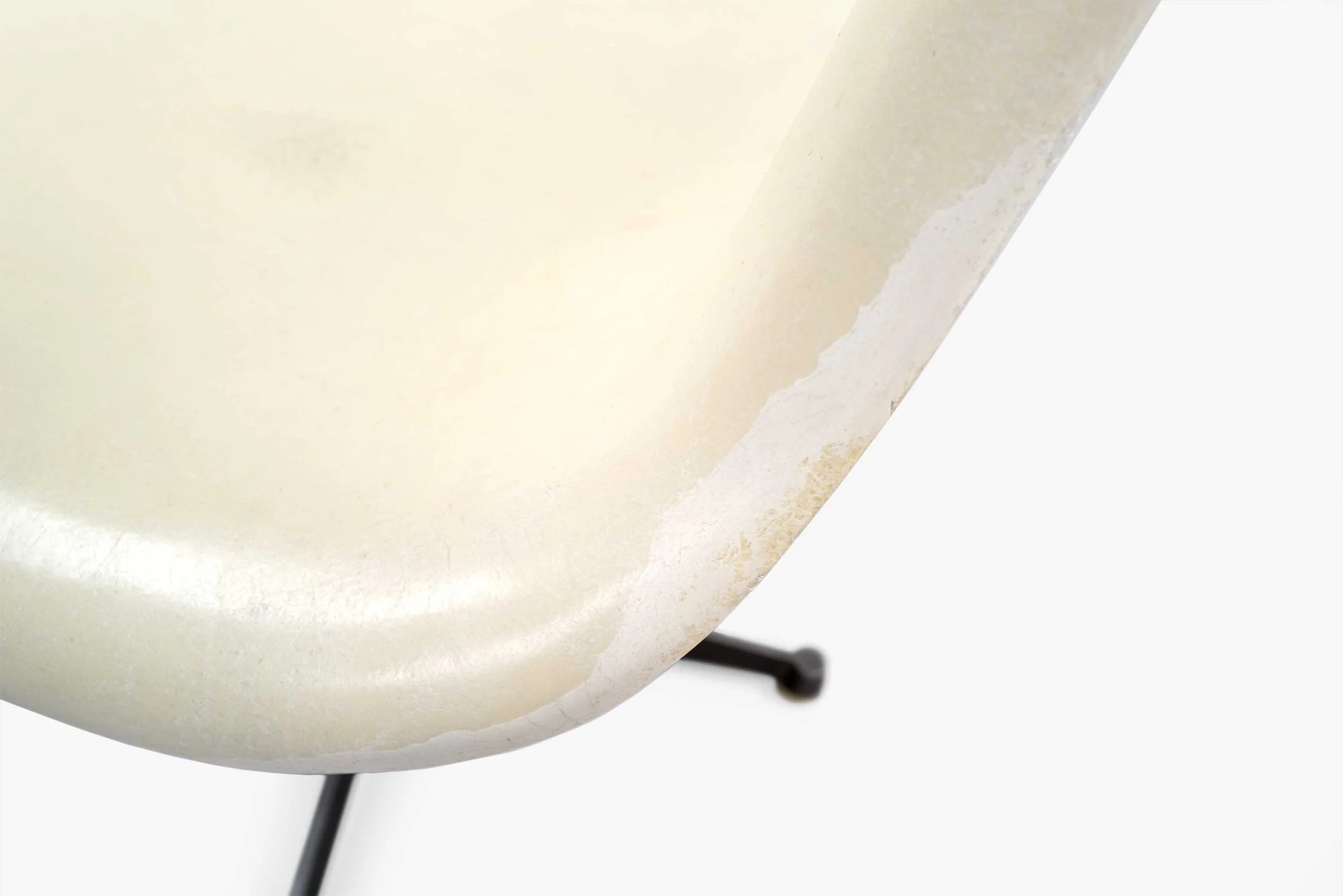Herman Miller PC/1, Export Version Europe, ca. 1957-1960














Scale:
Information:
This particular chair from the late 50s / early 60s was found in Italy. However, it is not made by the licensed Italian manufacturer ICF Italia / De Padova which were also operating in the 1960s to reproduce Herman Miller products under their licenses. The privately held company Vitra GmbH was founded in the early 1950s in Basel. When Herman Miller gave Vitra the license to reproduce the iconic Eames furniture for the European market, they changed their name from Vitra GmbH to Contura S.A.. In the first years, they imported the Eames fiberglass shells from the United States. The bases were produced by Contura S.A. because they had great skills in making metal works because of their earlier business background.
This particular chair must be one of the first chairs that were sold on the European market between 1957 and 1960. The foil label underneath the shell is similar to the ones in the USA, used from 1951 to 1956. The design is slightly different. The most recognizable differences are the round edges, and the line in the middle of the Herman Miller “M” is not there. The whole font is also rounded with a thin black line. A similar label was also found on a shell that has its origins in Venezuela, which could be another indicator for a kind of export label.
Herman Miller USA Label 1951-1956
Herman Miller Label (not identified yet)
The hand-painted "M" is also an indicator for one of the first shells used for the European market, at a time when Contura S.A. did not yet have their own labels. We found several of these chairs, all with a painted "M" in a different color. The different colors are grey, black, yellow, and green.
The chair is coated with white or beige paint, which is letting the fiberglass texture slightly disappear on the back. It also creates a very soft surface. You can see a borderline between the paint and the original fiberglass material on the left and right sides, directly under the arm rest.
In some spots, the paint is accidentally applied over the edge of the main seating area.
Borderline between paint and fiberglass surface, left side
Borderline between paint and fiberglass surface, right side
Paint that was accidentally colored over the edge.
As already mentioned, the base was probably made in Europe by Contura S.A. It has a roughness to it. The surface is a pure metal material with no extra finishing. You can also see the sharp edges that were coming from the mold. At this time, they weren't able to make them invisible. Later, they were able to create soft corners and edges without cutting edges.
For us, this is another indicator to believe that the chair is one of the first-selling series in Europe.
PC/1 mark underneath one of the metal legs
















